Archive for August, 2020
2020 Solidarity born 40 years ago
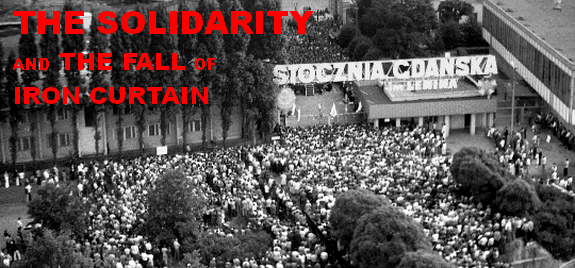 Online exhibit: THE SOLIDARITY AND THE FALL OF THE IRON CURTAIN
Online exhibit: THE SOLIDARITY AND THE FALL OF THE IRON CURTAIN
Wystawa wirtualna: Solidarność i upadek żelaznej kurtyny
Background image: Gdańsk Shipyard during the strike in August 1980
Photo by Tomasz Michalak/FOTONOVA from the collection of Polish History Museum
The Amazing Story of Solidarity Begins
– 40 Years Ago
Remarks by Prof. Emeritus Donald Pienkos
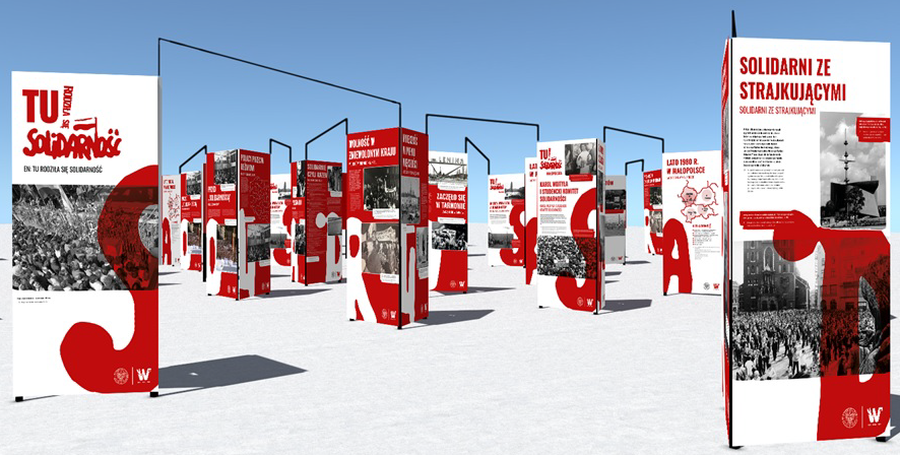
August 28, 2020: From the Institute of National Remembrance (Instytut Pamięci Narodowej),
“This is where ‘Solidarity’ was born” exhibit officially opens in Warsaw’s Piłsudski square – but displayed in 53 locations all over Poland since July.
August 29, 2020: Niagara Falls lit white and red to celebrate the birth of Solidarity on August 31, 1980
(captured from the Clifton Hill Live Cam feed)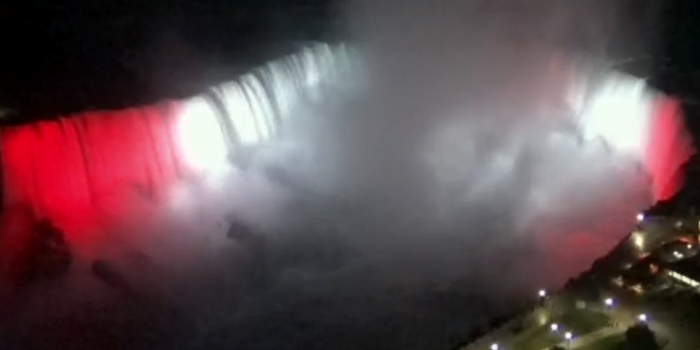
On August 14, 1980 the Solidarity trade union – Solidarność – was conceived in the Lenin Shipyard in Gdansk, Poland. Founded by working men and women, it quickly mushroomed into a nationwide non-violent movement of nearly 10 million members committed to workers rights, freedom, and social justice in the midst of a great and continued economic crisis.
Solidarity’s amazing story is rooted in the Polish people’s frustration with the failed policies of the communist regime imposed on their country by Soviet Russia after World War II and in their response to the visit to his beloved homeland by Pope John Paul II in June 1979. There he told the millions who saw and heard him, “Be not afraid.” Be true to yourselves and your time honored values.
Nonetheless following his departure to the Vatican, Poland’s downward economic spiral only worsened. In response, the regime ordered steep increases in food prices in July 1980 – a move that led to workers’ sit down strikes across the country. Faced with their legitimate demands for wage increases to cushion the price hikes, demands in response to a crisis they had nothing to do with causing, the regime caved in everywhere.
Some Selected Key Dates in the Solidarity Story
August 14, 1980 The Solidarity movement is born in the Lenin Shipyards of Gdansk
August 31, 1980 The Union’s 21 Point program, including Solidarity’s independence, is accepted
September 1980 The Solidarity Union’s charter receives official state recognition
March 1981 A Regime-sponsored effort occurs in Bydgoszcz aimed at breaking the Union
September 1981 First Solidarity national convention – Walesa is elected chair; the delegates call for Solidarity-like unions in the Soviet Union and East Europe!
November 4 1981 Party leader Jaruzelski, Walesa and Cardinal Glemp meet to end the crisis but fail when Jaruzelski rejects any genuine power sharing proposals
December 12, 1981 Martial law is proclaimed; the United States imposes Sanctions on Poland and the USSR
October 1982 The Parliament dissolves Solidarity; Martial Law officially ends in December
June 1983 Pope John Paul II’s second visit to Poland; Martial Law is lifted in July
July 1984 A first major regime amnesty of political prisoners is declared February 1987 U.S. lifts sanctions but Jaruzelski still refuses to recognize Solidarity
April-August 1988 Virulent strikes break out in Nowa Huta (Krakow), Gdansk, and the coal mines February 6, 1989 Roundtable talks begin in Warsaw
April 5, 1989 Solidarity is restored to full legal status
June 4, 1989 Semi-free Parliament elections result in an overwhelming Solidarity victory September 1989 A Solidarity-led government is approved by Parliament
At the Gdansk Shipyards, where 15,000 men and women were employed, workers went beyond wage demands to protest the firing of a respected co-worker, Anna Walentynowicz – just months before she was to retire. Another indiviual, Lech Walesa, a former worker blacklisted for his independent labor union organizing activities, joined them and was immediately made a leader of its strike com-mittee. Two days later the committee won its wage demands and Walentynowicz and Walesa were reinstated. At this point, the committee received appeals to give its support to strikers in other Baltic seacoast enterprises. An interfactory strike committee headed by Walesa was set up, with new demands calling for the creation of an independent union and a union newspaper free of government censorship. Solidarnosc was born.
The Communist party sent a high ranking government emissary to Gdansk to meet with the Strike committee. But he found himself facing not only a determined shipyards committee but one bolstered by advisors from Warsaw who had courageously backed workers’ rights in the past. On August 31, 1980, after days of tense talks, during which 640,000 workers had gone on strike around the country, an agreement was at last reached. All of Solidarity’s demands were accepted – including its right to be an independent, self-governing, labor union.
This unimagined agreement sparked Solidarity’s amazing expansion into a massive national force that grew in just a few weeks to nearly ten million members. By then a new Party leadership that included Defense Minister Wojciech Jaruzelski was also in place. But months of frustrating tension-filled delays followed, with anti-Solidarity party and government leaders backed by the Soviet Union doing all they could to oppose the Union. And as Poland’s economic conditions worsened, they fixed the blame on Solidarity. Moreover, behind the scenes, General Jaruzelski had put together a martial law plan to suppress the movement.
On December 12, 1981, after 16 months of crisis, Jaruzelski imposed martial law, claiming he acted to prevent a civil war. His perfectly executed plan resulted in the jailing of 9,700 Solidarity leaders and the union’s suppression. In response, the United States imposed severe economic sanctions on Poland and began covertly supporting those Solidarity activists who had escaped arrest. This effort, along with those of John Paul II, helped keep the Solidarity cause alive. For its part, Jaruzelski’s military-dominated regime failed to destroy the Solidarity idea, to build support for its rule, and to revive Poland’s distressed economy. At last, faced with renewed worker unrest, the General, with Soviet leader Mikhail Gorbachev’s blessings, began “Roundtable talks” with Solidarity representatives to try to find a way out of the crisis which by then had gone on for more than a decade. These talks opened in Warsaw on February 6, 1989.
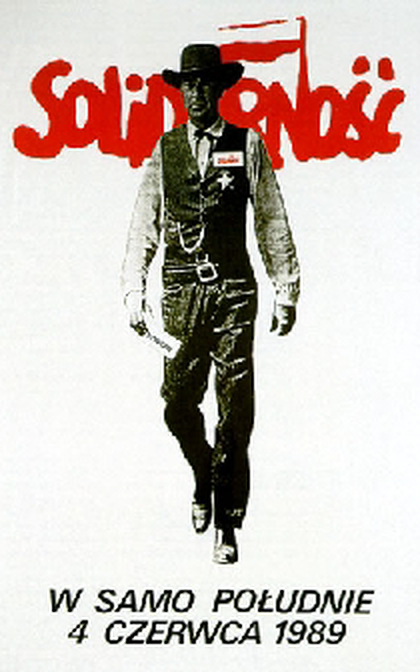
The iconic “High Noon” (W samo południe) poster urging people to vote in 1989 election (created by Tomasz Sarnecki)
The Roundtable, while controversial to this day, brought Solidarity’s restoration on April 5, 1989 and a special election to the Polish parliament on June 4. This election, while only partly free, saw Solidarity win an incredibly overwhelming victory. Of the 261 freely elected candidates, not a single one was won by a regime nominee. Moreover, even communist party nominees running unopposed lost when over half of the voters crossed their names off the ballots! The Party’s humiliation was so complete that it was obliged, with Gorbachev’s approval, to reluctantly accept a Solidarity-led government.
Headed by Tadeusz Mazowiecki, this new government was approved in September 1989. In December, the Parliament ended the “People’s Poland” system and proclaimed a new, democratic Polish Republic. In January 1990, the Polish communist party dissolved. By then Soviet rule over Hungary, Bulgaria, Czechoslovakia, East Germany and Romania was over and the infamous Berlin Wall had fallen. What began in Gdansk in August 1980 would culminate with the disintegration of the Soviet Union itself in 1991 and the end of the Cold War.
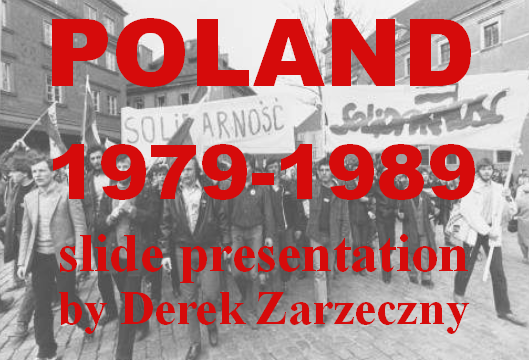
From the panel discussion “Poland 1979-1989: Living through Poland’s Extraordinary Decade: Memories from Members of Our Community” held by the Polish American Congess Wisconsin Division on April 22, 1980 comes the above slide show presented by Derek Zarzeczny.
Polish Americans backed Solidarity. Indeed, the Polish American Congress, American Polonia’s civic action voice, had called its demands “fully justified” – only days after its creation. In December 1981, PAC leaders were in the White House to join with President Reagan in condemning martial law. In 1985, the PAC led the protest in New York City objecting to Jaruzelski when he headed a delegation to the United Nations to mark its 40th anniversary. In September 1989 PAC and Polish American community leaders were in Poland to give their support to Prime Minister Mazowiecki’s new Solidarity government. In October 1989 the PAC and Polonia welcomed Lech Walesa to Chicago just days after his stirring speech to the U.S. Congress. And in the years after American Polonia both strongly backed U.S. aid to Poland and Poland’s entry into the NATO Alliance.
Solidarity, an inspired and inspiring non-violent movement of “ordinary” people who were anything but ordinary, helped usher in a new post Cold War world – a world we have been blessed with for more than thirty years.*
*The contributions of countless Solidarity acticists can be found in works like those of Andrzej Paczkowski: Revolution and Counterrevolution in Poland, 1980-1989 (2015) and Antoni Dudek: The Road to Independence: Solidarnosc (2000).
2020 Battle of Warsaw Centenary
On August 28, 2020 at 10 am CDT (11am EDT), Piotr Puchalski will examine the role of the Polish-Soviet War in determining Western geopolitical aims.
Registration required Click here to register
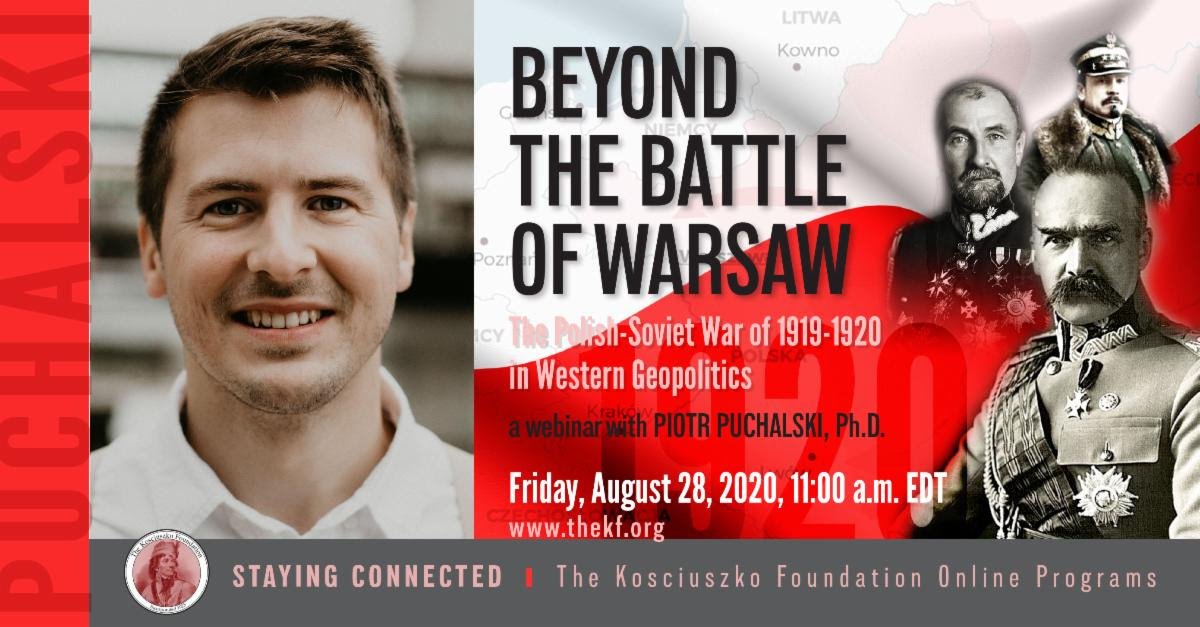
From the Kosciuszko Foundation website: Piotr Puchalski holds a Ph.D. from the University of Wisconsin-Madison and is an Assistant Professor of modern European history at the Pedagogical University in Kraków. He specializes in the diplomatic and political history of the interwar period. In his upcoming book, he analyzes the role played by colonial aspirations in the formation and development of the interwar Polish state.
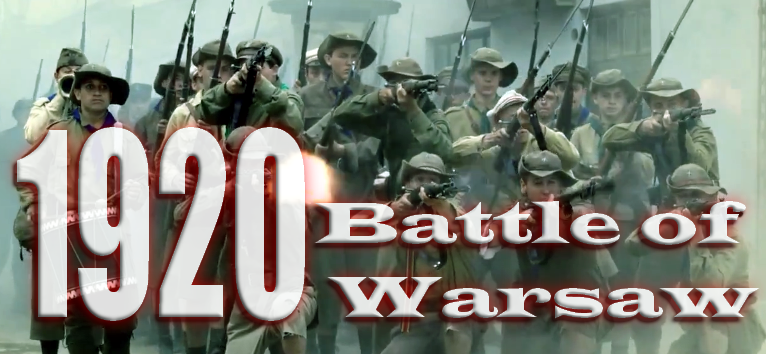 Background image: Young defenders of Warsaw pictured in the epic 3D movie
Background image: Young defenders of Warsaw pictured in the epic 3D movie
“1920 Battle of Warsaw” (pl. Bitwa warszawska 1920) directed by Jerzy Hoffman (2011)
downloadable exhibit
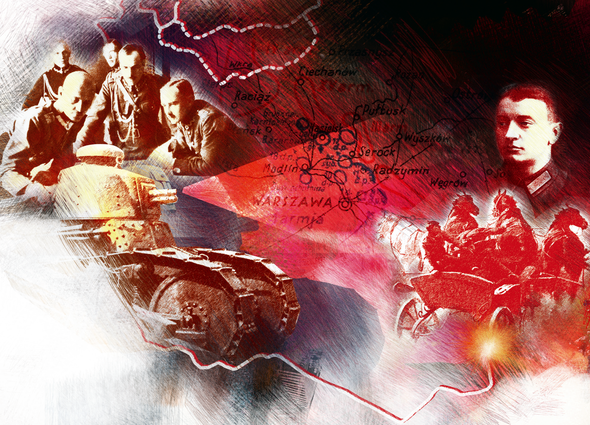
1920-2020
THE BATTLE OF WARSAW
Polish Victory for
European Freedom
The Battle of Warsaw is Won
100 Years Ago
Remarks by Prof. Emeritus Donald Pienkos
Fought August 13-20, 1920 between the armies of the newly restored Poland and revolutionary Bolshevik Russia, this great battle is also known as “the Miracle of the Wisla” or Vistula, Poland’s main river. Pitting two armies totaling over 250,000 combatants, the battle resulted in the Bolsheviks’ total defeat. As to its signify-cance, Britain’s ambassador to Germany, in Warsaw at the time, would call it “the 18th most decisive battle in world history.” Why was this Battle fought? Why was it so important?
On November 11, 1918, the very day the First World War ended with an armistice or truce in the trenches dividing Germany and France, General Jozef Pilsudski proclaimed Poland’s national rebirth in Warsaw. This came after 123 years of occupation by the empires of Russia, Austria and Germany. But proclaiming independence was one thing, making independence a reality and successfully defining its borders were very different matters. Indeed it would take the Poles more than two years of difficult negotiations along with plenty of fighting to accomplish these gargantuan tasks. For his part Pilsudski believed that for Poland to survive it needed to include the lands to the east that had been part of the old Polish Commonwealth going back to 1772. It was in that year that Russia, German Prussia and Austria had seized a third of the country in what became known as the first partition of Poland, the first giant step in the country’s destruction in 1795.
multimedia presentation
1920 BATTLE OF WARSAW
English Version…….Polish Version
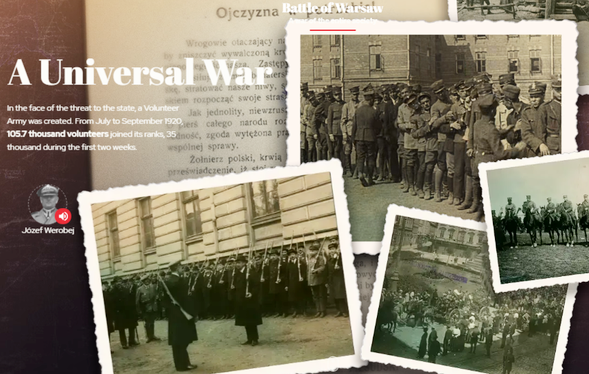
From the Great War (1914-1918) and the rebirth of Poland (1918), the show details the course of the Battle of Warsaw and its aftermath: A Free World to the West and a Prison of Nations to the East.
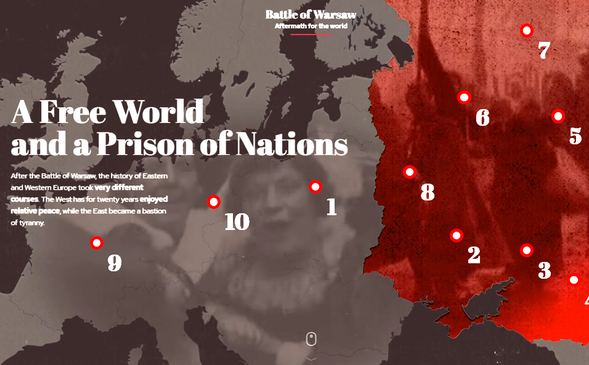
However, these eastern lands were inhabited mainly by non-Polish peoples – Ukrainians, Belorussians, and Lithuanians – with ethnic Poles comprising just 35 percent of the population. Still, Pilsudski believed these nationalities could be persuaded to be part of a new, federalized Polish state and in that way be liberated from the oppression they had endured under Russia – whether it was the Russia of the tsars or that of their new Bolshevik revolutionary successors led by Vladimir Lenin who had seized control of the empire in 1917. Indeed by 1919 Poland had become embroiled in a worsening border conflict with the new and radical regime in Moscow.”
By Spring 1920 Pilsudski had given up the idea of a restored multi-ethnic Commonwealth. Instead he made an agreement with the head of the latest Ukrainian national government in Kiev headed by Symon Petlura that aimed at guaranteeing Ukrainian independence from Soviet Russia. But in response an infuriated Lenin then ordered the mobilizing of a new and massive Bolshevik army to regain control of the Ukraine. Furthermore, he created a committee of Polish Bolsheviks under Felix Dzerzhinsky, who had organized the ruthless CHEKA special police force to secure the revolution in Russia. Dzerzhinsky’s group’s mission was to follow the “Red Army” in its invasion of Poland, unseat Pilsudski, and establish a puppet state subservient to Lenin.
As quickly as the Polish army had moved into Kiev in May 1920, just as quickly was it driven westward back into ethnic Poland. By the end of July the massive Red Army commanded by the 27 year old Mikhail Tukhachevsky was approaching Warsaw itself. Incredibly this war had exploded into a conflict that pitted over a million Bolshevik troops against about 750,000 Poles in a true fight to the death. In this war infantry, cavalry, tanks, armored locomotives, even airplanes would all see action.
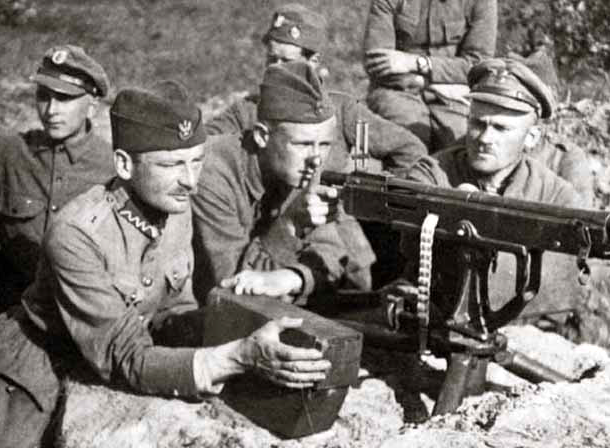 By July Poland was in a panic, its forces in seeming disarray. Pilsudski, the great hero in May was now condemned by his critics in Warsaw as the gravedigger of independence. Poland found itself abandoned by its supposed allies, France and Britain. But Pilsudski kept his head. He appointed Wincenty Witos, the popular leader of the Peasant party to be Prime Minister and called on him to rally the country’s vast peasantry to the nation’s defense. In response countless thousands of peasant farmers joined patriotic urban workers in the fight for Poland’s survival.
By July Poland was in a panic, its forces in seeming disarray. Pilsudski, the great hero in May was now condemned by his critics in Warsaw as the gravedigger of independence. Poland found itself abandoned by its supposed allies, France and Britain. But Pilsudski kept his head. He appointed Wincenty Witos, the popular leader of the Peasant party to be Prime Minister and called on him to rally the country’s vast peasantry to the nation’s defense. In response countless thousands of peasant farmers joined patriotic urban workers in the fight for Poland’s survival.
As the Bolshevik army neared Warsaw, Pilsudski got a lucky break when Polish crytographers got hold of Tukhachevsky’s plans. Pilsudski himself devised the strategy to defeat the massive invasion. Essentially his plan was to lure the Bolsheviks to attack the defenders of Warsaw from the east. As the battle commenced he then ordered most of his troops to wheel around from the south in a massive sweeping action against the invaders’ left flank. The plan worked. The Reds were totally surprised and thrown into panic. Of its 130,000 man army, over 20,000 were killed, 65,000 were captured, and another 35,000 were forced to flee into East Prussia where they were disarmed. In the Battle, the Poles lost about 4,500 men.
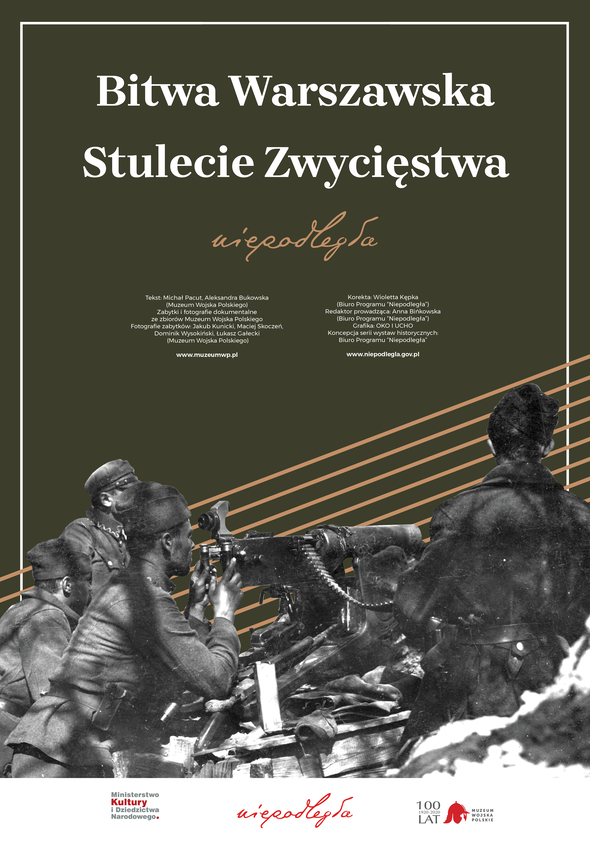
1920-2020
THE BATTLE OF WARSAW
Centennial of the Victory
exhibit only in Polish
Just two weeks later the remaining Red army forces under Cavalry Commander Semyon Budyonny and Josef Stalin were also crushed. By October Lenin was forced to call an end to the fighting. The Bolsheviks were forced to wake up from their dream of a victory over the corpse of the Polish ‘landlord state’ propelling the revolution into war-wrecked Germany itself. In March 1921 Poland and Russia reached a border settlement at Riga in Latvia. In it Poland gained some Ukrainian and Belorussian lands to the east. But most of the Ukraine and Belorussia was lost to the Soviet regime. Their peoples, including the Polish minority that chose to remain outside of Poland, would go on to suffer in horrific fashion in the years to come.
Josef Stalin was one Bolshevik who never forgot the debacle of 1920. As Lenin’s successor, in 1937 he ordered the execution of Tukhachevsky, a leader he hated. In August 1939 he and Adolf Hitler conspired to divide Poland between Soviet Russia and Nazi Germany as part of a pact that led to World War II just days later. In April 1940 he got more revenge in signing the death warrants for 24,000 captured Polish military officers and civic leaders in perpetrating an incredible (and long denied) war crime known as the Katyn Forest Massacre.
The battle of Warsaw was indeed a miracle in that victory saved the new Polish republic in 1920. Lenin’s dream of making victory over Poland the stepping stone to a violent European-wide revolution was also shattered.”
With victory, Pilsudski’s stature rose dramatically. However his political enemies remained unreconciled to him. In 1926 he did lead a coup against the government and established a regime of national moral reform (“Sanacja”). It would survive his death in 1935, only to be destroyed by the Nazi-Soviet invasions of 1939.
The monumental victory at Warsaw in August 1920 was thus not the “end of the story”. But it did allow the citizens of a reborn Poland to experience two critical decades of independence.
*Sources for the battle of Warsaw can be found in Richard Overy: A History of War in 100 Battles (Oxford University Press, 2014); pp. 75-79; and Adam Zamoyski: The Polish Way: One Thousand Years of Polish history and Culture (1985), pp. 335-339; M.K. Dziewanowski: Poland in the Twentieth Century (1977), pp. 80-84; and Wikipedia.
2020 The Warsaw Rising Remembrance
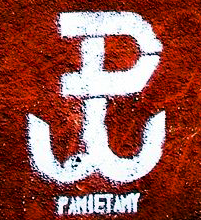
Honoring the Heroes
of Warsaw Uprising
on August 1 at “W” hour
(5 pm of Warsaw time, 10 am of CST)
In line with many years of tradition, thousands of Poles gathered at major intersections, squares and places of remembrance in Warsaw to honor the heroes of the Warsaw Uprising (8/1/1944 – 10/2/1944) with a minute of solemn silence held to the sounds of alarm sirens and dramatic illumination of handheld flares.
The uprising was the largest military effort undertaken by any resistance movement in the entire German-occupied Europe. About 40,000-50,000 insurgents gave their all to liberate Warsaw from German occupation. Help from the approaching Soviet Army never came and after 63 days of heroic effort, the revolt was brutally crushed. The death tool and destruction of the city was immense. Nearly 200,000 insurgents and civilians lost their lives, about 500,000 people were driven out of Warsaw and 85% of the city was razed to the ground in the course of systematic annihilation carried out in the months following the uprising.
The central observance took place at the Gloria Victis (“Glory to the Vanquished”) monument at the Powązki Military Cemetery in Warsaw. Much attention went this year to the Warsaw’s district of Wola, where Polish President Andrzej Duda paid tribute to the victims of the Wola Massacre. In this largest of the kind crime committed during the entire WWII, German soldiers slaughtered in just three days (August 3-5,1944) about 40,000-65,000 mostly civilians, including patients and staff of the Wola Hospital.
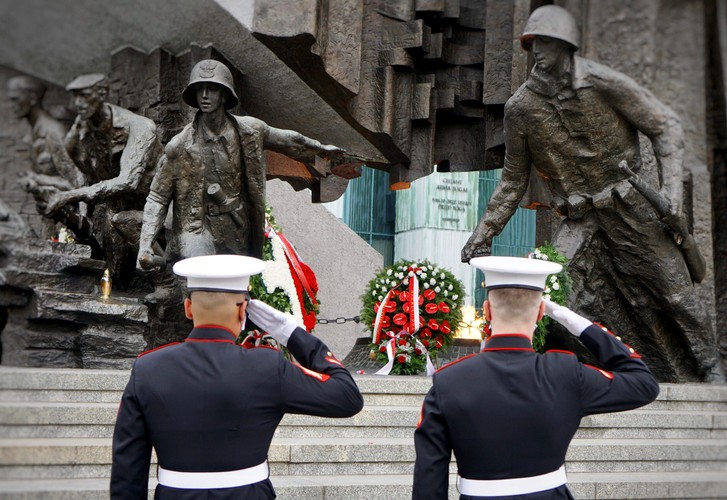
The memory of Warsaw Uprising was honored also by the ambassadors of the United States, Israel and Germany. Georgette Mosbacher, the U.S. ambassador to Poland, twitted: “On August 1, 1944, Poles embarked upon a heroic fight for their beloved city and homeland. Freedom is not free. Our Marines pay tribute to the fallen Heroes of the Warsaw Uprising.” and “As @POTUS said in Krasińscy Square in his speech to the veterans of the Warsaw Uprising: “We salute your noble sacrifice and we pledge to always remember your fight for Poland and for freedom.” 01.08.1944 – We remember!” In the article entitled “Heroes of Western Civilization: 76 Years After the Warsaw Uprising,” the White House recalls the main points of this speech while acknowledging it as “one of the most important speeches of his presidency.”
On the other hand, the German Embassy placed this somber message on social media: “As a sign of deep pain and shame caused by the crimes of the German occupier during the fighting with the population of Warsaw during the Warsaw Rising, the German embassy lowered the flags to half of the masts’ height. The Chargé d’affaires of the embassy has laid a wreath at the monument of Warsaw Rising.”
Selected media with information about the Warsaw Uprising in 1944
and its commemoration at the “W” hour each year.
Archived Posts
- 2023 Merry Christmas
- 2023 Lighting the Light of Freedom on Dec 13 at 7:30pm
- Independence Day and Veteran Day invitation
- 2023 Wianki Festival
- 2023 May 3rd Constitution Day Celebration
- 2023 Lecture on Polish Borders by Prof. Don Pienkos
- 2023 REMEMBER THIS: Jan Karski movie premieres on PBS Wisconsin
- 2023 Upcoming lectures in the Polish Center of Wisconsin
- 2022 Polish National Independence Day
- 2022 Independence and Veteran Day Luncheon (invitation)
- 2022 Wianki, Polish Celebration of Noc Świętojańska (St. John’s Night)
- Celebrating Constitution of May 3, 1791 in Polish Center of Wisconsin
- 2022 Polish Constitution Day, Polish Flag Day and the Day of Polonia
- 2022 March Bulletin
- 2022 Polonia For Ukraine Donations
- 2022 Polish American Congress Condemns Russian Invasion of Ukraine
- 2022 PAC-WI State Division Letters to WI Senators and Representatives
- 2021 Polish Christmas Carols
- 2021 Panel Discussion: Martial Law in Poland 1981-1983 (REPORT)
- 2021 Panel Discussion: Martial Law. Poland 1981-1983 (invitation)
- 2021 Solidarity: Underground Publishing and Martial Law 1981-1983
- 2021 Polish Independence Day and Veterans Day
- 2021 Polish Independence Day and Veterans Day Luncheon
- 2021 Prof. Pienkos lecture: Polish Vote in US Presidential Elections
- 2021 POLISH HERITAGE MONTH EVENTS
- 2021 “Freedom” Monument Unveiled in Stevens Point, Wisconsin
- 2021 PCW Picnic and Fair
- 2021 Remembering Września Children Strikes (1901-1903)
- 2021 May 3 Constitution Day
- 2021 DYKP Contest Winners and Answers
- 2021 DYKP CONTEST EXTENDED and CASIMIR PULASKI DAY
- 2021 February announcements
- 2021 Polish Ministry of Education and Science oficials visit Wisconsin
- 2021 DYKP Contest, KF Gallery and Dr. Pease lectures
- 2020 Help Enact Resolution commemorating the 80th Anniversary of the Katyn Massacre
- 2020 Independence And Veterans Day
- 2020 Remembering Paderewski
- 2020 POLISH HERITAGE MONTH
- 2020 Solidarity born 40 years ago
- 2020 Battle of Warsaw Centenary
- 2020 The Warsaw Rising Remembrance
- 2020 June/July News: Polish Elections, Polish Films Online and more
- 2020 Poland: Virtual Tours
- Centennial of John Paul II’s Birth
- 2020 Celebrating Polish Flag, Polonia and Constitution of May 3rd
- 2020 Polish Easter Traditions
- 2020 Census and Annual Election
- Flavor of Poland (Update 3)
- 2020 Copernicus, Banach & Enigma talk
- 2020 Do You Know Poland and other announcements
- 2020 Flavor of Poland (Update 2)
- 2020 People and Events of the Year
- 2019 Holidays
- 2019 December Medley
- 2019 Independence Celebration
- 2019 Independence Invitation
- 2019 WI Study in Poland Reports
- Lecture: Poland’s Entry Into the NATO
- August 2019 anniversaries
- 2019 Polish Fest
- Celebrating Polish Constitution and Ignacy Paderewski
- WSIP 2018 Reports (Wisconsin Study in Poland)
- 2018 Christmas Carols
- 2018 Polish Independence and Veterans Day
- November 2018 events
- October 2018 Events
- 2018 Kashube Lecture Notes
- September 2018 events
- 2018 Polish Fest Report
- Upcoming 2018 Polish Fest
- Celebrating Polish Constitution Day
- Poland 1979-1989 (panel discussion)
- Protest the Passage of S.447 in the U.S. House of Representatives


